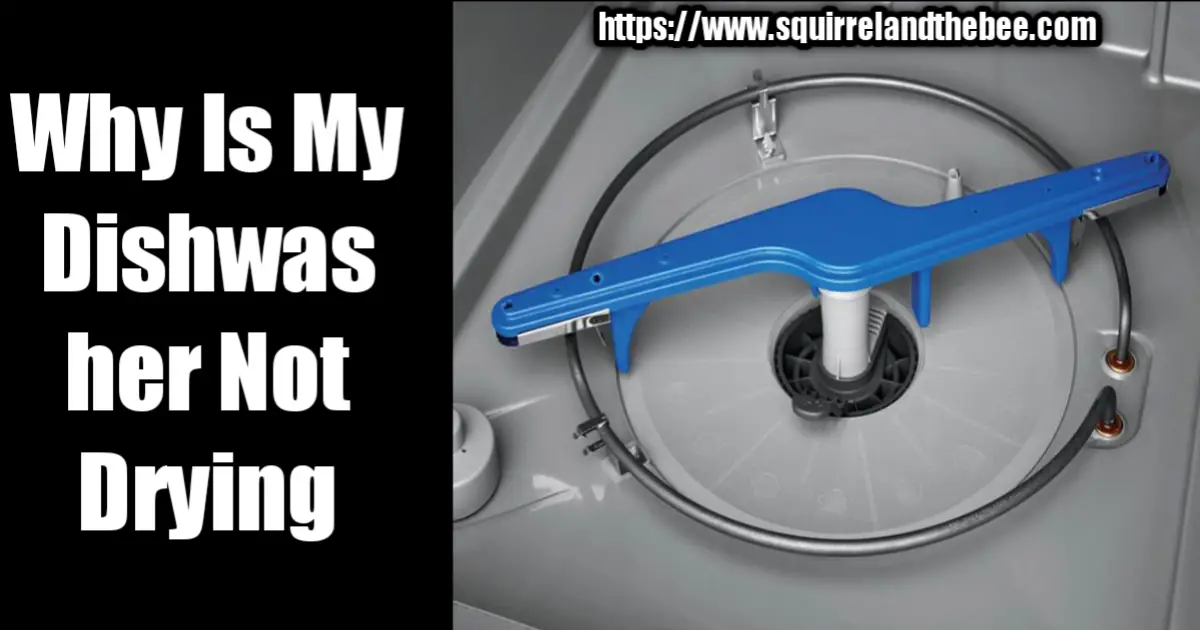A dishwasher is very much a necessity among the kitchen appliances. It is never acceptable for a dishwasher to stop working properly. Amidst all the hustle and bustle in our daily life, a good working dishwasher is very handy, especially when we don’t have enough time in hand to waste in manually washing and drying the dishes. Thus it really is inconvenient indeed for a dishwasher to stop drying the dishes.
Although there could be several reasons behind this issue, there are solid solutions to them as well. Few basic troubleshooting methods can help to save you from this horrible nightmare.
Why Does My Dishwasher Not Dry Dishes Anymore?
Dishwashers workby convention method. Hence, it depends on many factors like temperature, type of material and amount of material put in it. Also, there are many mechanical elements that should be taken under consideration while dealing with dishwashers.
Every machine has instructions and particular systems which needs to be kept in mind. So to expect an appliance to provide its best performance, it needs to be handled with care as well as enough knowledge.
Overloading dishes can be a cause for dishwasher not drying dishes properly. Dishes should have enough space between each other so that the hot air can reach every corner of the items.
Dishes shouldn’t be stacked together as moisture can get trapped between them when the warmer air is unable to touch the surface area of each dish.
Less number of dishes should be put in the dishwasher at a time.
Moreover, few parts of the dishwasher might be malfunctioning obstructing the drying ability. The vent in the dishwasher might not open properly thus not allowing the extra steam and water vapour to escape resulting in a creation of damp environment inside the dishwasher.
Besides, the fan that dries the dishes might also be damaged due to a burnt out motor or the airflow might be blocked by litter.
The heating element present at the bottom of the dishwasher might also be responsible for the drying problem. As it is known, the heating element is there to provide high temperature for drip drying process in the dishwasher. But if it is broken, there might be an imbalance in the working temperature.
Temperature might be lower than expected resulting in being unable to dry the dishes properly. Also, heating element parts like the terminals and connectors might be wearing away and may need to be scraped or replaced. Either way it is very much of a trouble.
In addition, a desecrated thermostat can be another reason as it has a very important role in drying the dishes. A thermostat helps in regulation of drying cycle. It also helps in regulating the temperature of water, hence saving the dishwasher from excess heat. If it doesn’t work well then the power to the dishwasher gets detached instantly,disrupting the drying process.
In the same way, a faulty rinse and dispenser cap which usually is used in repelling water can also become a questionable accomplice. If the detergent dispenser leaks or the capis not opening during a cycle, rinse aid won’t be able to spread along the water to drip down the dishes in order to avoid formation of droplets in them.
A rinse aid helps to get rid of hard water marks, so it is very important to ensure which brand works best with your dishwasher.With this many problems, all the steps of dishwashing process may not get completed before the dishwasher eventually shuts down.
There are also few very basic objectives blocking the perfect drying process. Dishes might not be put in the dishwasher properly following a given instruction in the manual. Also, the dishes might be unloaded in wrong order. Limited supply of warm water could be a cause too.
How Do You Fix A Dishwasher That Is Not Drying?
When an appliance breaks down, the first thing that is needed is to go through the instruction booklet given along the appliance. Try to figure out what could go wrong with the dishwasher to not dry the dishes. Then go for the primary readjusting methods.
If the issue seem to be something related to dispenser failure, you can try fix it. The task of a rinse aid is transparent, it helps in rinsing by decreasing the surface tension of water. Hence, it’s important to keep an eye on the dispenser to check whether it is filled or not, if not then sufficient amount of rinse aid should be poured until it indicates to be full.
However, if it is already overflowing with adequate rinse aid, an accumulation of viscous matter might be blocking the rinse aid from dispensing into the dishwasher. This should be immediately scrubbed off by pulling off the cap.
On the flip side, drying difficulty due to malfunctioning dishwasher parts could be a tricky situation. A trial and error method is needed to discover the failed part.
- For instance, examine the thermostat by choosing a brief wash cycle. Set the dishwasher at the highest temperature and check if the internal area gets heated up after completion of the wash.
- Use a multi-tester, affordable at reasonable price below $20 on Amazon, to test for progression. Its reading should be at infinite resistance at room temperature while at zero at the space heater. Otherwise, thermostat needs repairing or replacement.
- Other than that, another major problem is with the heating element. That should also be tested for faulty behaviour using a multi-meter once again. The resistance analysis should be between 15 to 30, might vary. But if the needle seems to be stuck or slides to zero then the heating element must be repaired which requires an expert.
The complication might worry you, thus here are few simple inspection that can be made to come up with the perfect solutions.
- Ensure the drying mode of dishwasher is set correctly for best performance.
- Open the door of the dishwasher after every wash to let the damp air to clear out. Also, keep the dishwasher at rest for about 30 minutes before unloading the dishes giving a chance for the unsettled water to evaporate.
- Make sure that the vent opens decently. Using multi-tester ensure that the switch is working, or else a replacement is required.
- Scrutinise the fan motor as well. Try moving the fan manually to check if it revolves freely. If not, restore with a new one.
- Restrict number of plastic dishes as plastics don’t heat up easily thus don’t vaporize water efficiently.
- Put a full stop to pre-washing the dishes since in that case the dishwasher uses shorter, cooler temperature wash resulting in less vaporization and more condensation.
- Ensure that the dishwasher is attached properly to hot water supply, broken water flap needs to be changed. Set the water heater to minimum 120°F to experience best washing and drying processes.
You may as well follow these few rack-by-rack advices to achieve drier dishes-
- Put glasses and bowls upturned on the upper rack avoiding water collection.
- Keep dishes faced inward on the bottom rack making sure that they are far apart from each other as that helps in drying rapidly.
- Clinging should be avoided at all costs,thus take turns in organizing forks, spoons and knives in each sector.
Facing obstacles even after troubleshooting? You may need to contact professional technicians for rapid service. You may as well contemplate the cost of a home warranty and register. Safeguarding helps you cover expenses regarding the repair.




